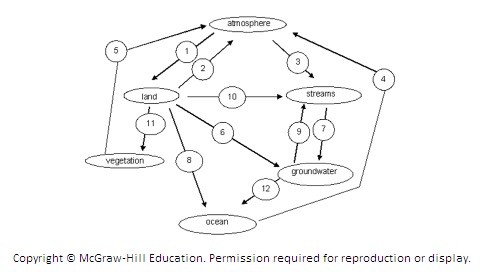Using the Darwin-Wallace mechanism of natural selection, describe how the long necks of
giraffes evolved. What will be an ideal response?
In the population of ancestral giraffes there was some natural variation; some of the animals had
longer necks than others. Those with longer necks could reach higher into trees and eat leaves
that their competitors couldn’t reach. These longer-necked animals were more successful, so they
survived and reproduced. Finally, after many generations, the animals looked like modern
giraffes.
You might also like to view...
Draw a sketch to show where eddies can form when air blows rapidly over a mountain range. Indicate where clouds might form. How would these clouds appear when viewed from the ground?
What will be an ideal response?
A gust front within a multicell thunderstorm separates: a. rain from hail
b. cool, sinking air from warm, rising air. c. warm, sinking air from cool, rising air. d. None of these choices.
Which factor did NOT contribute to the flooding around Jakarta, Indonesia, in February 2007, which killed dozens and forced the evacuation of more than 400,000 people?
a. torrential rains b. deforestation of hillsides near the city c. a volcanic eruption that occurred just prior to the flooding d. storm drains and rivers clogged with trash e. inadequate urban planning
The following diagram illustrates the Hydrologic Cycle. Match the item below to the arrow on the diagram (note: some items may be used for more than one arrow).Example: If you believe that water passes from clouds to streams by evaporation then choose that answer for arrow 3. Match the item below to the arrow on the diagram for number 1. (Note: some items may be used for more than one arrow).
Match the item below to the arrow on the diagram for number 1. (Note: some items may be used for more than one arrow).
A. Evaporation B. Infiltration C. Transpiration D. Runoff E. Precipitation